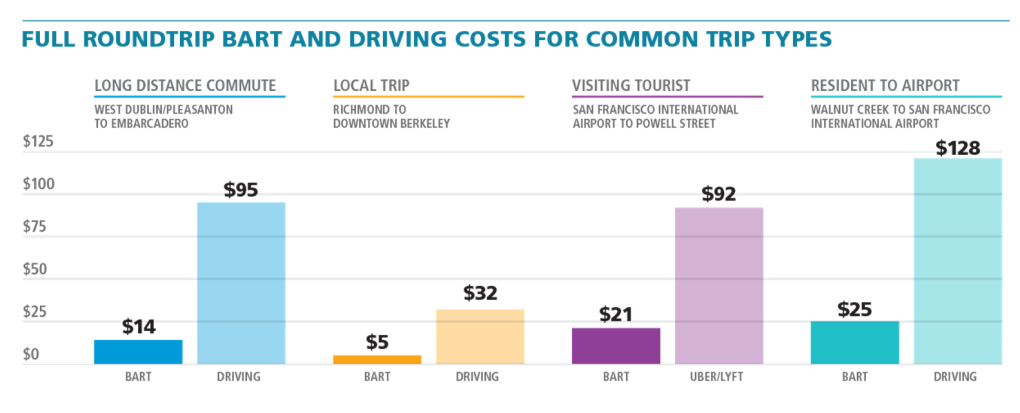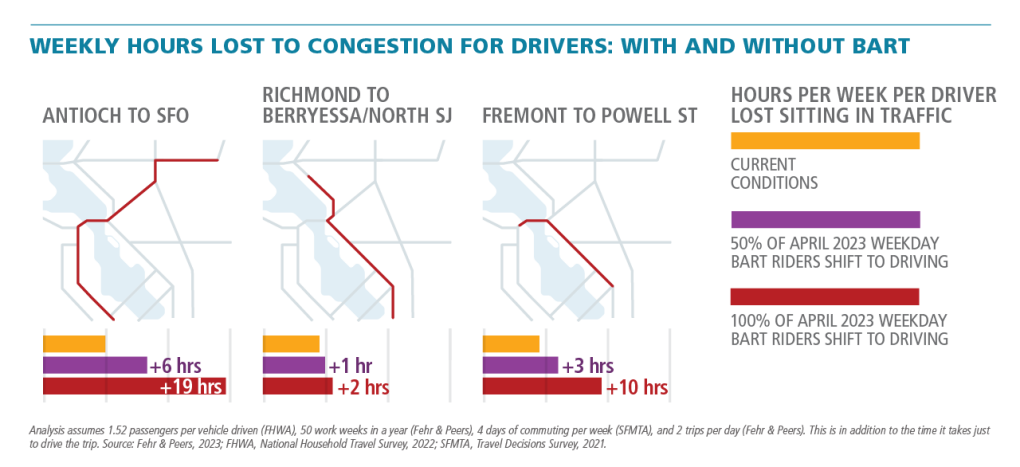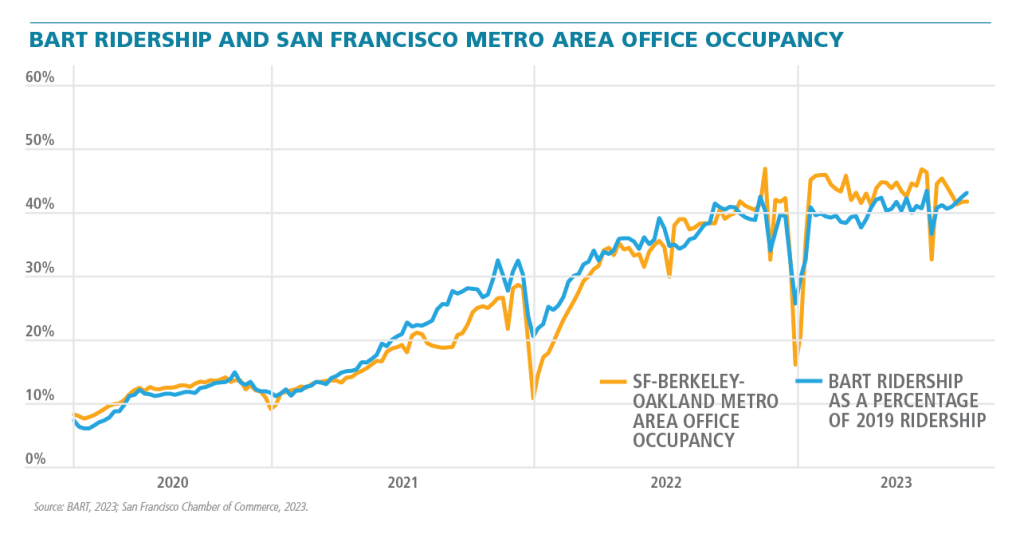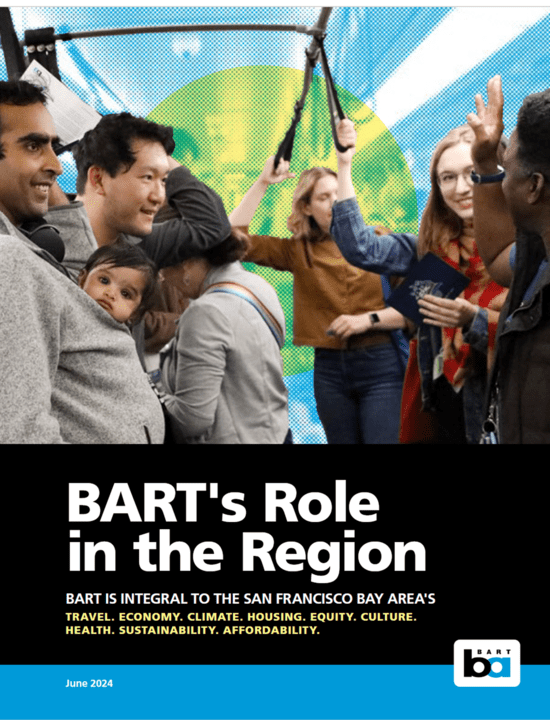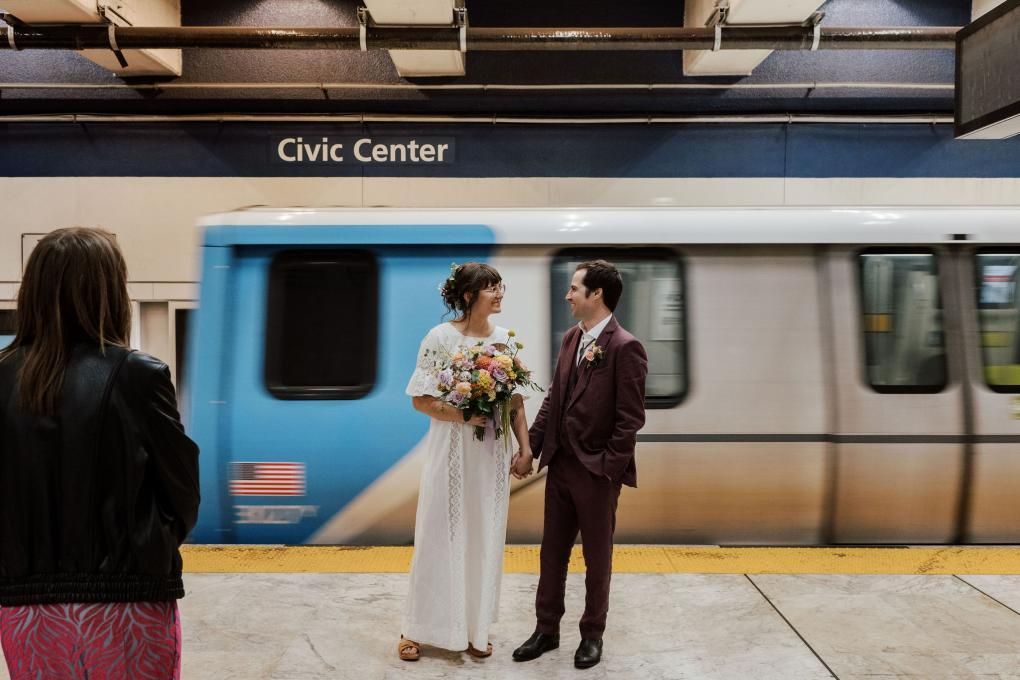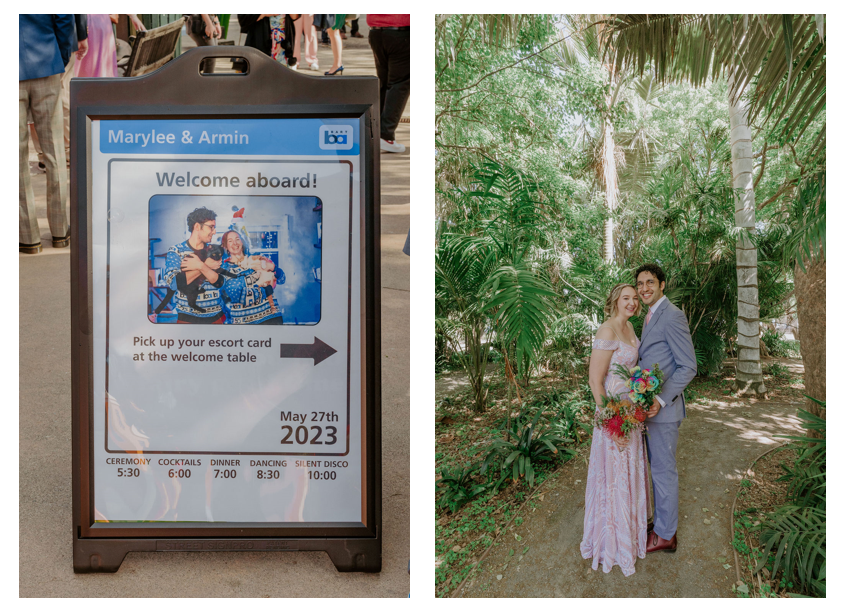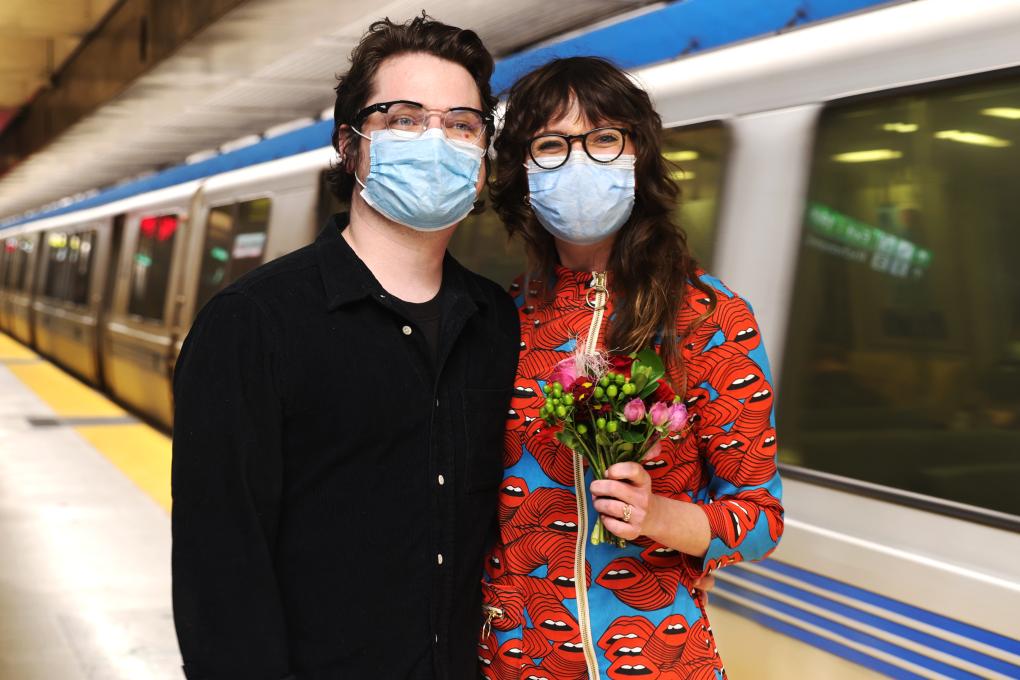Search Results
Serial entrepreneur turned Station Agent reflects on his journey to BART

Update: Marcus is now a full-fledged Station Agent!
Marcus Dyer had been working at San Leandro Station as a Station Agent trainee for only a week when he noticed something happening. The same six people, every time they stepped inside the station, would wave and stop to chat with him.
“I wanted to become a Station Agent because it gives you the ability to be a part of a community,” Dyer said recently, speaking on a break from on-the-job training at Lake Merritt Station. “You see the same people every day, and sometimes you see them on their worst days. As a Station Agent, you have the opportunity to turn their day around and make it better.”
Dyer is one of 31 individuals training to become station agents at BART. Due to hiring needs, BART is currently running two certification classes concurrently of about 15 trainees each. During the 18-week course, which is held three to four times a year depending on hiring needs, the budding station agents learn about every aspect of the transit agency, including:
- District Operations Rules & Procedures
- Customer Service
- Administrative & Operational Procedures
- Station Facilities and Communications
- Automatic Fare Collection
- Ticket & Clipper Card Analysis
- Reports and Forms
- ADA
- Safety & Emergencies
- Opening and Closing Procedures
The course, which includes on-the-job training as well as classroom-based curriculum, culminates in a rigorous certification test. The current group of trainees is slated to take the test in May.
Dyer, a former student at San Francisco State University, has welcomed his return to the classroom.
“I’m the oldest kid in my class,” he said. “To be able to go back into a school environment and turn my learning skills back on…it makes me feel awesome.”
With age, Dyer said, comes wisdom.
“I’ve had a lot of life experiences and been in a lot of different situations, which helps put things into perspective,” he said. “I tell the younger folks in my class: You’ve been in harder situations than Station Agent training. Relax and try to enjoy it!”
Before embarking on his BART journey, Dyer was a “serial entrepreneur.” In his time, he’s owned a limousine company, an upholstery shop, and a catering business. During the first year of the pandemic, he made and sold more than 2,000 masks when he noticed they weren’t widely available in his community. He donated a mask for each one purchased.
Recently, Dyer felt it was time to make a change and find “more stable” work, especially work that provided benefits such as healthcare and retirement. His road to Station Agent was 20 years in the making, he said.

In the early 2000s, Dyer filed an application to become a BART Station Agent. He made it through the first two stages, but never took the final test.
“I don’t really remember why I didn’t take it. It probably had something to do with my job at the time,” he said. “But it’s always been in the back of my mind that I should have been working at BART 20 years ago.”
Dyer said he was drawn to the role of Station Agent because of his “love for people.”
“To be able to help people while making a living that allows me to take care of myself and my family…it’s a beautiful thing,” he said. At home, he has an eight-month-old Dogo Argentino named Taylor – “She already weighs 75 pounds!” he said with a laugh.
According to Dyer, the Station Agent role “is the hardest job at BART.” That’s why he’s trying to “learn everything” he can about the system – a system he’s been using since he was a child growing up in Oakland.
BART has played a large role in Dyer’s life, and many of his formative memories circle around a station. His church sits right across from MacArthur Station, for example, and he grew up looking at the station and its trappings from the pews. In college, he took BART every day to San Francisco for class. His heart, however, will always reside at Coliseum Station.
“I’m a big A’s, Warriors, and Raiders fan, so I’ve been using that station since I was six years old,” Dyer said. “I’ve probably done hundreds of tailgates in the parking lot.”
Ahead of the final test in May, Dyer is optimistic about what his future at BART might hold. He said the transit agency is “one of the greatest places in the world” for folks looking to embark on a second career.
“If you put your effort into it, you will have the opportunity to succeed,” he said. “I truly don’t know any other place like this, where you can interact with people all day and also make a great living.”
BART to operate Sunday service on Memorial Day
On Monday, May 30, Memorial Day, BART will operate on a regular Sunday schedule. Trains will operate beginning at 8 a.m. at 20-minute intervals on the three lines listed below. Richmond to Fremont Pittsburg/Bay Point to Millbrae Dublin/Pleasanton to Daly City
BART workers complete rebuild of critical trackway
(Updated 9/24/18) A team of dedicated BART workers has completed a major rebuilding project for one of the most critical pieces of track in the entire system. The work happened over four weekends between the 19th Street and West Oakland Stations. All of that work resulted in the following accomplishments: 3
East Contra Costa BART Extension Chronology
Project Milestones 2009 Project Development Phase completed and Final Design Phase advances 2011 Construction commenced 2014 Awarded eBART Vehicle to Stadler Bussnang 2015 Construction of Transfer Platform and Maintenance Facility completed 2016 eBART Vehicle delivery 2018 Service begins May 26, 2018
Five decades of service: BART tickets through the years
BART’s first paying passenger on Sept. 11, 1972. In celebration of BART’s 50th anniversary this year, we’re looking back at the transit system’s five decades of service and innovation in a new series of stories. BART celebrates 50 years on Sept. 11, 2022. The BART magnetic ticket, with its blue and black
BART’s “Role in the Region” detailed in new report that describes the benefits of BART and the devastating impacts of a Bay Area without it
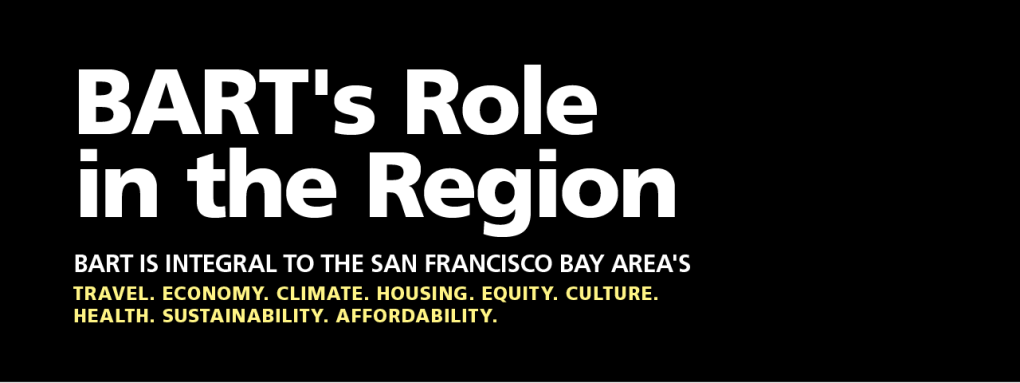
A new report released today paints a bleak picture of a Bay Area without BART while highlighting the benefits of the transit system to the region with a wide range of metrics.
Click here to view a pdf of the report and visit the project webpage at bart.gov/roleintheregion.
BART's Role in the Region Report aims to inform a regional conversation about the future of BART by describing its contributions to the Bay Area. It also provides predictions for how the Bay Area – its economic viability, traffic-choked roadways, cultural institutions, and more – will look without BART.
“The Bay Area and our regional transportation network have undergone significant changes since BART last conducted a Role in the Region study in 2016," said BART General Manager Bob Powers. “The 2024 Role in the Region Report arrives at a crucial crossroads for BART and the region, and the data, analyses, and stories within will serve as an important educational resource for the pivotal years ahead.”
In the report, you will find insights into key topics, including changes in travel patterns and funding; BART’s holistic benefits to the Bay Area; and BART’s future.
Below is a snapshot of some of the report’s findings:
BART’s benefits:
- BART is significantly more affordable than driving (Fig. 1 in slideshow). Example: Taking BART from West Dublin/Pleasanton Station to Embarcadero Station roundtrip costs $14. Driving the same route costs $95 when accounting for gas, tolls, parking, insurance, and maintenance.
- BART is integral to a connected regional transit network. Within a 15-minute walk of BART and one transfer to a connecting agency transit stop, you can reach 67% of the 9-county Bay Area region’s jobs, 61% of the region’s residents, and 60% of schools, parks, and libraries.
- In 2023, BART contributed $1.2 billion to the economy through more than 5,000 jobs when accounting for BART’s direct payroll expenditures, local vendor spending, and employee expenditures. Between 2019 and 2023, BART infused the local economy with more than $3.7 billion in construction spending and $1.7 billion in construction labor income.
If BART did not exist:
- Regional traffic congestion would worsen. Example: Drivers could experience up to an additional 19 hours lost to congestion weekly (Fig. 2).
- Traffic could increase by 73% on the Bay Bridge and 22% in the Caldecott Tunnel during morning peak commute hours.
- The regional transit network would fail to function, and there would be cascading effects across the 300 bus, light rail, ferry, private shuttle, and inter-regional routes that connect to BART (Fig. 3).
Changing regional travel trends:
- BART ridership is closely linked to regional office occupancy rates; both have recovered to ~43% of pre-pandemic levels (Fig. 4).
- Because of BART’s decreased farebox recovery, BART expects a budget deficit beginning in 2026 when state and federal emergency assistance runs out.
View the full Role in the Region Report.
BART Transbay service restored: expect residual delays
Photo of fire at West Oakland Due to a fire near BART tracks in West Oakland that started early this morning, BART service between Oakland and San Francisco was suspended for most of the day today. BART service continued throughout the East Bay and between San Francisco / Peninsula stations. Reports indicated
BART makes preparations to carry extra passengers if needed
BART has made preparations to carry large loads of passengers out of downtown San Francisco and Oakland if crowds increase following today's sentencing in Los Angeles of former BART Police Officer Johannes Mehserle. BART is extending train lengths all day to accommodate extra riders. Additionally, the 11
On Valentine’s Day, BART to host first-ever speed dating/friend making event on a moving BART train
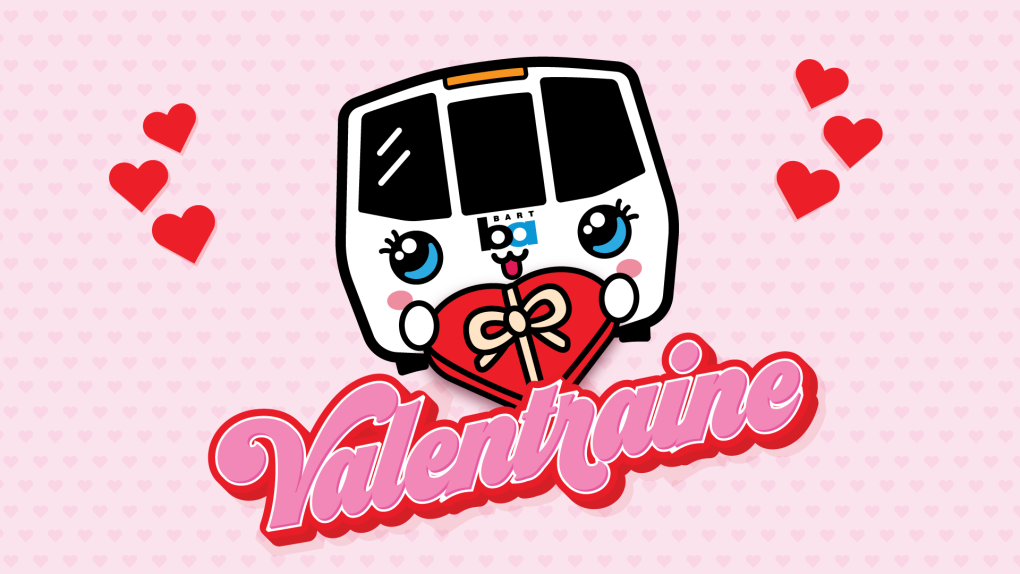
This Valentine’s Day, hop on the Valentraine and ride your way to love or friendship.
On the evening of Friday, Feb. 14, BART invites adults ages 18 to 35 to join us for an on-the-rails mixer aboard a moving BART train. Ride BART into someone’s heart on a special train reserved just for this event!
It’s time to get off the apps and get on Trainder. This is speed dating – literally.
We’ll help grease the wheels with icebreaker activities, conversation starters, a raffle, and BART-themed Valentines that you can give to potential connections.
Adults of all sexual orientations are welcome as are those looking to make friends rather than find romance. We will have name tags with a space to write in what you are looking for. Participants must be ages 18 to 35 (we’ll explore hosting a similar event for those 35+ in the future).
What: BART speed dating/friend making
When: Friday, Feb. 14, 6:30pm to approx. 8:35pm
Where: Start at Downtown Berkeley Station and ride to 24th St./Mission before returning to Downtown Berkeley. The train will not stop for the duration of the ride.
Who: Adults ages 18 to 35 of all sexual orientations looking for love and/or friendship
RSVP Required: bartspeeddating.eventbrite.com
RSVPing via the Evenbrite link above is a requirement for participation, and registration is limited. The e-ticket you receive from Eventbrite is NOT your BART fare. Every participant must have a Clipper card – make sure you have at least $7.10 (BART’s excursion fare) on your card.
Here’s how things will go:
- Arrive at Downtown Berkeley Station no later than 6:30pm for check-in. Late arrivals will not be allowed onboard. We will meet inside the station on the concourse level under the rotunda. Look for BART staff with signage.
- Depart Downtown Berkeley at 7:10pm.
- We’ll ride the Red Line to 24th St./Mission, where the train will turn around and head back to Downtown Berkeley. The train will not make stops for the duration of the ride.
- Arrive at Downtown Berkeley Station at approx. 8:35pm.
- If you plan to park and ride, we suggest parking in the lot at Ashby Station (one stop up the line) and ride BART to Downtown Berkeley. There are also multiple parking lots and limited street parking near the station.
There will be additional staff and safety presence on each train car. BART has a zero-tolerance policy for sexual and gender-based harassment, consuming alcoholic beverages and illicit substances, and engaging in disruptive/disturbing behavior in our trains and stations. Read the full Customer Code of Conduct here. Violators will be removed from the train and face potential disciplinary action.
BART is experimenting with hosting events on trains such as this speed dating/friend making mixer as a way to engage our community, spur connections, and encourage riding BART. We’ve heard so many stories of people meeting partners and friends onboard, as well as those who’ve taken a train to get married. We hope this event will generate even more stories! Find links to a selection of these articles below.
Read the couples' stories:
A transit wedding happened naturally for these newlyweds
Former BART attorney met the love of her life on San Francisco-bound train
Couple who met on BART tie the knot with whimsical BART-themed wedding at Fairyland
"Good vibes on the train": BART employee takes BART to wedding ceremony at San Francisco City Hall
“BART Guy” and “BART Girl” finds love on an empty Embarcadero platform
Keep up to date with the latest BART service information
We are experiencing a heavy volume of riders today, Wednesday, Nov. 2. As always, BART’s primary mission is to ensure your safety and keep trains on-time. Listen for public address announcements and watch for electronic messages when inside stations. To assist our disabled passengers, BART personnel will be
